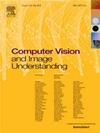MASK_LOSS制导的基于多关注模块的非端到端图像去噪网络,该网络带有偏置校正线性单元和绝对池化单元
IF 4.3
3区 计算机科学
Q2 COMPUTER SCIENCE, ARTIFICIAL INTELLIGENCE
引用次数: 0
摘要
基于深度学习的图像去噪算法具有较好的去噪性能,但在去噪后存在细节丢失、边缘过于平滑等问题。此外,这些去噪模型往往涉及冗余计算,导致利用率低,泛化能力差。为了解决这些挑战,我们提出了一种非端到端多注意力去噪网络(N-ete MADN)。首先,我们提出了一个Bias Rectified Linear Unit (BReLU)来代替ReLU作为激活函数,它提供了更大的灵活性和更大的激活范围,而无需额外的计算,构建了一个具有深度卷积(DConv)的特征提取单元(FEU)。然后提出了由信道注意块(CAB)、空间注意块(SAB)和信道相似注意块(CSAB)组成的绝对池化单元(abspooll - Unit),并将其集成到多注意模块(MAM)中。CAB和SAB的目的分别是在空间维度和通道维度上增强模型对关键信息的关注,而CSAB的目的是提高模型对相似特征的检测能力。最后,利用多注意去噪网络构建多注意去噪网络(MADN)。针对图像去噪后边缘信息丰富的图像,增强了对边缘的保护,便于图像去噪后边缘信息的重建,提出了一种基于loss和MADN的mask损失函数(MASK_LOSS)和非端到端多注意去噪网络(N-ete MADN)复合多级去噪网络。该框架提高了学习能力和效率,有效地解决了去噪任务中边缘细节丢失的问题。在两个合成数据集上的实验结果表明,我们的模型能够以较低的计算成本达到最先进的去噪性能。本文章由计算机程序翻译,如有差异,请以英文原文为准。
MASK_LOSS guided non-end-to-end image denoising network based on multi-attention module with bias rectified linear unit and absolute pooling unit
Deep learning-based image denoising algorithms have demonstrated superior denoising performance but suffer from loss of details and excessive smoothing of edges after denoising. In addition, these denoising models often involve redundant calculations, resulting in low utilization rates and poor generalization capabilities. To address these challenges, we proposes an Non-end-to-end Multi-Attention Denoising Network (N-ete MADN). Firstly, we propose a Bias Rectified Linear Unit (BReLU) to replace ReLU as the activation function, which provides enhanced flexibility and expanded activation range without additional computation, constructing a Feature Extraction Unit (FEU) with depth-wise convolutions (DConv). Then an Absolute Pooling Unit (AbsPooling-unit) is proposed to consist Channel Attention Block(CAB), Spatial Attention Block(SAB) and Channel Similarity Attention Block (CSAB) , which are integrated into a Multi-Attention Module (MAM). CAB and SAB aim to enhance the model’s focus on key information respectively in the spatial dimension and the channel dimension, while CSAB aims to improve the model’s ability to detect similar features. Finally, the MAM is utilized to construct a Multi-Attention Denoising Network (MADN). Then a mask loss function (MASK_LOSS) and a compound multi-stage denoising network called Non-end-to-end Multi-Attention Denoising Network (N-ete MADN) based on the loss and MADN are proposed, which aim to handle the image with rich edge information, providing enhanced protection for edges and facilitating the reconstruction of edge information after image denoising. This framework enhances learning capacity and efficiency, effectively addressing edge detail loss challenges in denoising tasks. Experimental results on both synthetic several datasets demonstrate that our model can achieve the state-of-the-art denoising performance with low computational costs.
求助全文
通过发布文献求助,成功后即可免费获取论文全文。
去求助
来源期刊

Computer Vision and Image Understanding
工程技术-工程:电子与电气
CiteScore
7.80
自引率
4.40%
发文量
112
审稿时长
79 days
期刊介绍:
The central focus of this journal is the computer analysis of pictorial information. Computer Vision and Image Understanding publishes papers covering all aspects of image analysis from the low-level, iconic processes of early vision to the high-level, symbolic processes of recognition and interpretation. A wide range of topics in the image understanding area is covered, including papers offering insights that differ from predominant views.
Research Areas Include:
• Theory
• Early vision
• Data structures and representations
• Shape
• Range
• Motion
• Matching and recognition
• Architecture and languages
• Vision systems
 求助内容:
求助内容: 应助结果提醒方式:
应助结果提醒方式:


